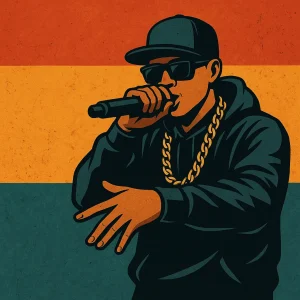What Is Hip-Hop? Exploring the Culture and Musical Style
Hip-hop is more than a genre — it’s a global movement. What started as a creative outlet for marginalized youth in the South Bronx during the 1970s has grown into one of the most influential cultural forces in the world. “Beats, Rhymes, and Life” isn’t just a catchy phrase — it captures the essence of hip-hop culture: the rhythm of the streets, the poetry of struggle, and the celebration of life through art.
The Birth of a Movement
Hip-hop was born out of the hardships of urban life in New York City. In the South Bronx, block parties became the backdrop for innovation. DJs like Kool Herc, Afrika Bambaataa, and Grandmaster Flash used turntables to isolate breakbeats from funk and soul records, creating a new musical style.
As MCs began to rhyme over these beats, rapping emerged as an art form. But hip-hop was never just music. It formed as a four-element culture:
- DJing (Turntablism)
- MCing (Rapping)
- Breakdancing (B-boying)
- Graffiti Art
This powerful mix of expression gave a voice to communities often ignored by mainstream media.
Rhymes with a Message
As hip-hop matured, so did its messages. Early party anthems evolved into lyrical commentary on real-world issues. Songs like “The Message” by Grandmaster Flash and the Furious Five confronted urban poverty and crime. Groups like Public Enemy and N.W.A used their platforms to address racial injustice and police brutality.
Hip-hop became a modern storytelling tool — a poetic voice of struggle and empowerment.
Beats that Move the World
The beats behind hip-hop are as diverse as the cultures that shaped them. Whether it’s the soulful samples of J Dilla, the West Coast G-funk of Dr. Dre, or the trap rhythms of the South, hip-hop production has constantly evolved. Producers became cultural architects, shaping the sound of generations.
From vinyl to digital samplers and 808 drum machines, beats became the canvas for the culture’s voice.
Hip-Hop’s Global Life
Today, hip-hop thrives in every corner of the world — from Nairobi to Tokyo to London. International artists rap in their native languages, infusing local stories and sounds into the art form. Despite geographical differences, the essence remains the same: resistance, expression, and rhythm.
Hip-hop now influences fashion, branding, film, and even politics. Figures like Jay-Z, Nicki Minaj, and Kendrick Lamar embody the culture’s potential to evolve from the underground to the mainstream, while still holding on to its roots.
More Than Music
At its core, hip-hop is about turning struggle into art and rhythm into revolution. It’s about amplifying voices, reclaiming identity, and celebrating creativity. Whether at a street corner cypher or a sold-out stadium show, hip-hop remains a powerful force that continues to shape the way the world moves, speaks, and dreams.
“Beats, Rhymes, and Life” isn’t just a title — it’s the story of how hip-hop became the heartbeat of a generation.
